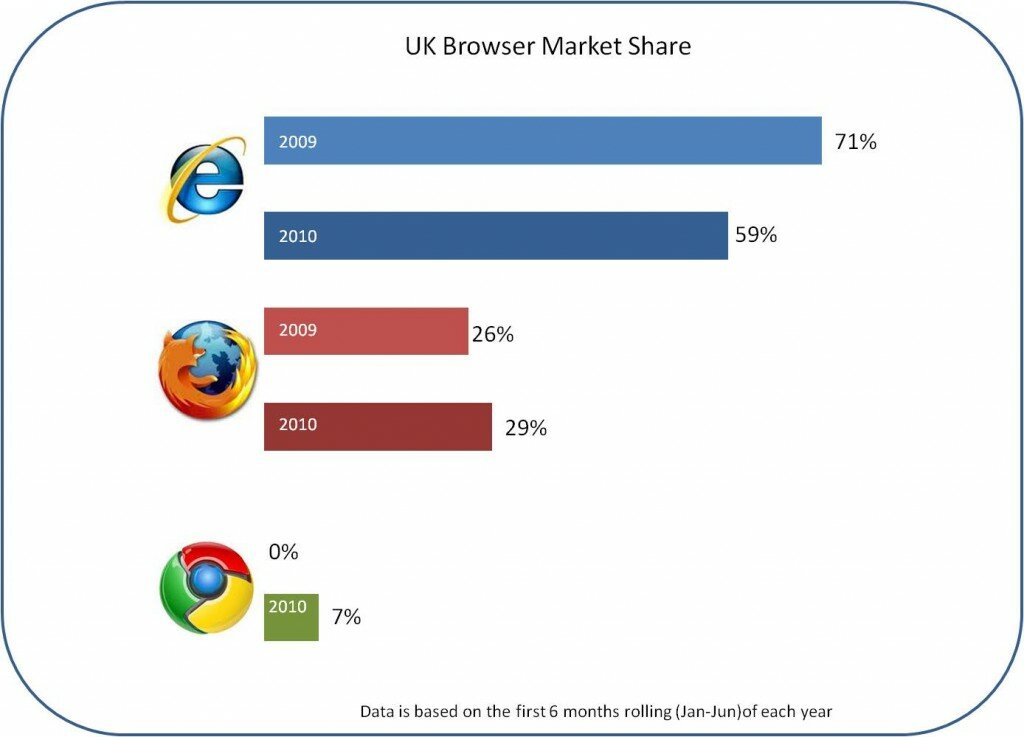Google continues the onslaught with Chrome
15/07/2010 15:03 by Priyesh PatelGoogle Chrome continues to muscle its way into the browser market as GfK data for January-June 2010 shows that it has a 7% share of the browser market. In June 2010 alone it accounted for a 9% share which is remarkable considering that it has only been in existence for 2 years.
To highlight the impact that Google Chrome is making we have compared Jan-Jun 2009 data against the same rolling months of 2010.

Compared to this time last year Internet Explorer has lost 12% market share while the Chrome and Firefox browsers have gained some ground. The bad publicity around Internet Explorer and its security flaws combined with the EU enforced cannot have done Internet Explorer any favours. Google Chrome is taking full advantage and eating its way into Internet Explorer at a rapid rate and there is no doubt that they want to do the same to Firefox
Similar to our findings in the last browser it is the younger age groups that continue to push Google Chrome. GfK data for June 2010 shows that 37% of Chrome users are aged 16-24. When considering that 70% of people in this age group spend 20 or more hours on the internet per week – there are a lot of hours being spent on the internet via Google Chrome.
Feel free to take a look at the latest GfK browser statistics .
The GfK figures align closely with the figures reported by StatsCounter and Net Applications. Although GfK data is only based on UK browser market share it has an added advantage of also containing important demographic information which is unavailable elsewhere (age, gender, UK region, marital status, time spent on the internet). From our data we know that only 25% of people in full time education are using Internet Explorer. If you are interesting in getting some more of this data then please feel free to contact GfK NOP Technology.
How we collect the data
Each month GfK NOP conduct a UK based online survey among UK adults aged 16 and over. The sample is representative of UK adults who use the internet ten hours or more per month. It is important to note that we do not ask a question about which browser the respondent uses, instead, our servers determine the respondent’s browser used to complete the survey. This data is therefore more robust than stated survey data as it is based on actual usage.
Monthly sample size; June 2010 (n=1224)
Jan-Jun 2009 (n=5763)
Jan-Jun 2010 (n=7360)
No related posts.
Tags: Chrome, Firefox, Internet Browsers, Internet Explorer, Market Share, Safari
